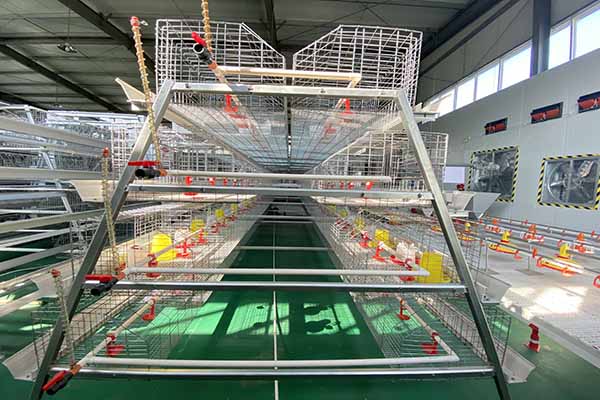
In today’s evolving poultry industry, scaling egg production efficiently while controlling operational costs has become imperative. For poultry farmers managing 5,000 to 30,000 layer hens, automated egg collection systems have emerged as a game-changing investment. This article explores how the H-type layer cage design—engineered by Zhengzhou Liwei Machinery—addresses the complex demands of varying climatic conditions and farm sizes, helping to reduce labor dependency by up to 30%.
Poultry farmers face multiple operational pain points: excessive manual labor costs, inconsistent egg quality, and managing hygienic conditions amid climate variability. Manual egg collection is labor-intensive, which can inflate operational costs by 20-40% on average. Moreover, fluctuating temperature and humidity levels in tropical or temperate zones impact hen comfort and productivity.
The need for a system adaptable across diverse environmental conditions—restricting egg breakage and optimizing cage space—has never been more vital. The automated egg collection combined with efficient manure removal offers a comprehensive solution to these challenges.
The H-type cage structure stands out due to its spatial optimization, efficiently using vertical space while ensuring animal welfare. Its tiered design maintains optimal air flow and temperature regulation, critical for both hot and cold climates. This spatial layout reduces stress on hens, enabling stable egg-laying rates that can increase by an estimated 5-8% compared to conventional cages.
Crafted from corrosion-resistant galvanized steel, the cage system promises durability under harsh humidity and temperature fluctuations, extending the equipment lifespan beyond 15 years with routine maintenance.
At the heart of this system lies an automated egg collection conveyor that ensures gentle handling, reducing egg damage rates to below 1.5%. The eggs roll smoothly onto collection trays following a scientifically designed path that minimizes collisions.
Simultaneously, the integrated manure removal system transports waste via a belt mechanism, promoting cleaner hen environments. This automation leads to an average 30% reduction in labor needs, supported by data from farms using this equipment for over 12 months.
“Since integrating the H-type automated collection system, our staff reduced manual egg gathering by one-third. Our eggs arrive in better condition, and the hens' health indicators have improved.” – Case study feedback from a 12,000-hen layer farm in Vietnam.
International buyers prioritize compliance and quality assurance. The H-type cage system conforms to ISO 9001 and CE certifications, ensuring reliable manufacturing standards and export readiness. These certifications provide buyers peace of mind about safety, durability, and global compatibility.
| Metric | Before Automation | After Automation |
|---|---|---|
| Labor Hours per 1,000 Hens/Week | 45 hours | 31 hours |
| Egg Breakage Rate (%) | 5.3% | 1.4% |
| Egg Production Stability (%) | 85% | 92% |
Farm managers should evaluate current labor costs, egg collection efficiency, and climate challenges before deciding on automation. The system best fits farms housing between 5,000 and 30,000 hens that seek scalability without compromising egg quality or hen welfare.
Considerations should include:
The intersection of smart design, robust materials, and automation significantly empowers commercial egg producers to reduce labor, improve animal welfare, and stabilize output quality. Using the export-compliant H-type automated egg collection system offers a strategic edge—meeting the practical demands of diverse climates and farm scales.

Deciding on such an investment requires thorough analysis of farm-specific factors. Downloading a templated evaluation or watching a detailed installation walkthrough can assist your decision process with actionable guidance.

